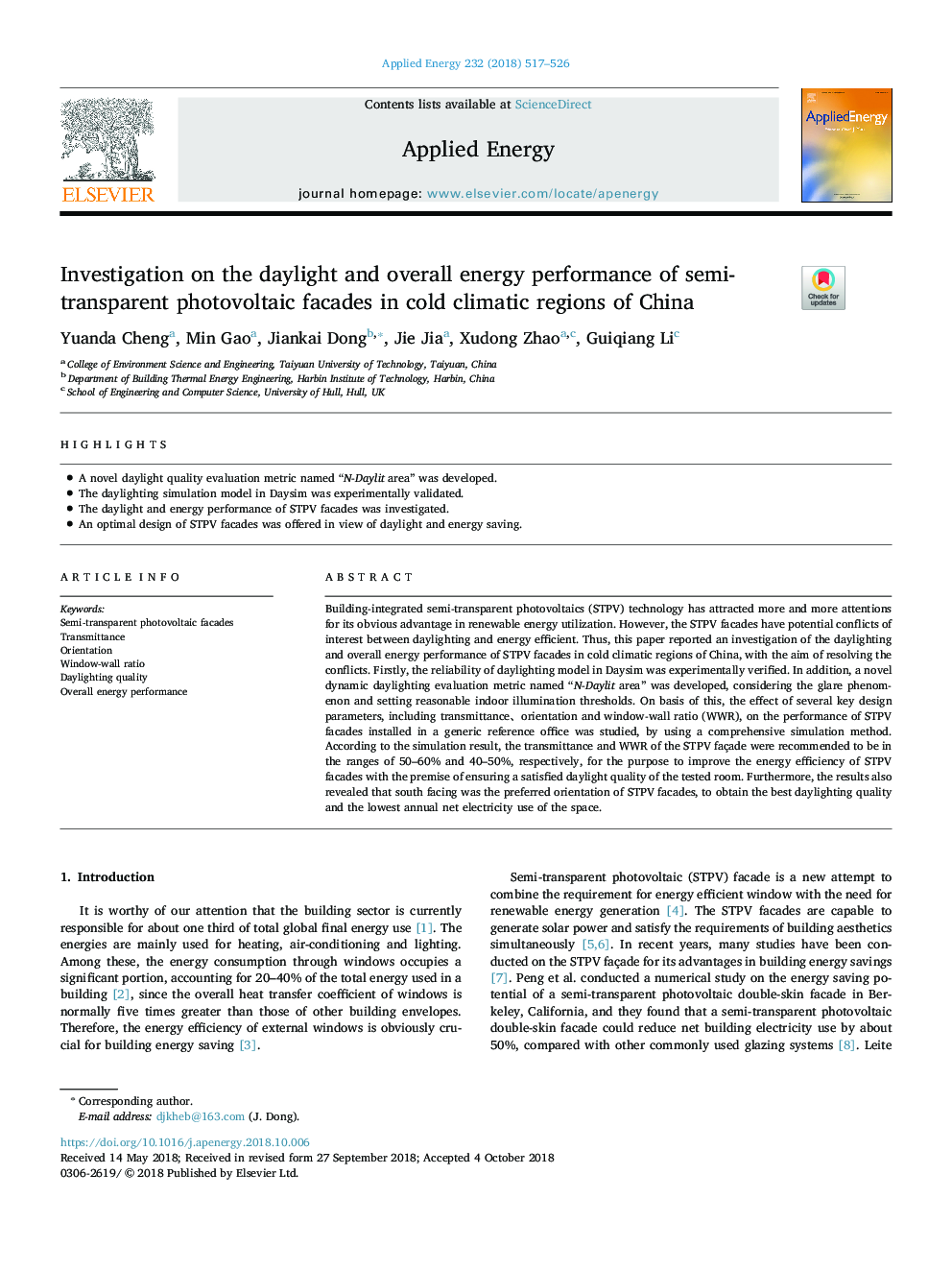| Article ID | Journal | Published Year | Pages | File Type |
|---|---|---|---|---|
| 11017585 | Applied Energy | 2018 | 10 Pages |
Abstract
Building-integrated semi-transparent photovoltaics (STPV) technology has attracted more and more attentions for its obvious advantage in renewable energy utilization. However, the STPV facades have potential conflicts of interest between daylighting and energy efficient. Thus, this paper reported an investigation of the daylighting and overall energy performance of STPV facades in cold climatic regions of China, with the aim of resolving the conflicts. Firstly, the reliability of daylighting model in Daysim was experimentally verified. In addition, a novel dynamic daylighting evaluation metric named “N-Daylit area” was developed, considering the glare phenomenon and setting reasonable indoor illumination thresholds. On basis of this, the effect of several key design parameters, including transmittanceãorientation and window-wall ratio (WWR), on the performance of STPV facades installed in a generic reference office was studied, by using a comprehensive simulation method. According to the simulation result, the transmittance and WWR of the STPV façade were recommended to be in the ranges of 50-60% and 40-50%, respectively, for the purpose to improve the energy efficiency of STPV facades with the premise of ensuring a satisfied daylight quality of the tested room. Furthermore, the results also revealed that south facing was the preferred orientation of STPV facades, to obtain the best daylighting quality and the lowest annual net electricity use of the space.
Keywords
Related Topics
Physical Sciences and Engineering
Energy
Energy Engineering and Power Technology
Authors
Yuanda Cheng, Min Gao, Jiankai Dong, Jie Jia, Xudong Zhao, Guiqiang Li,
